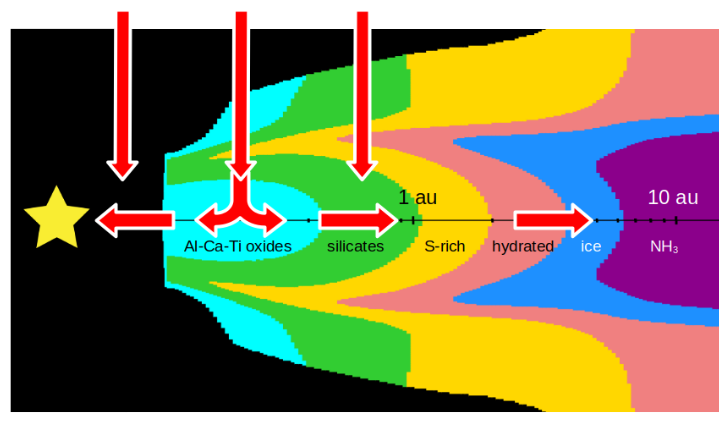
This paper proposes a pathway to form mm-sized, pure, and annealed Al-Ca-Ti oxide grains embedded in a matrix of amorphous silicates (which we interpret as the Ca-Al-rich inclusions (CAIs) found in meteorites) in the earliest evolutionary phases of the solar nebula, see Woitke et. al (2024a, -> ADS). Our model combines (1) the 1D viscous disc evolutionary models of Drażkowska & Dullemond (2018, 2023) with (2) ProDiMo with 2D radiative transfer including viscous heating, (3) the equilibrium condensation models of Woitke et al. (2018), and (4) new dust opacity calculations. The models reveal a thermostat mechanism in the disc midplane regions close to the star, which keeps the local temperature stable at about 1500 − 1700 K, just above the silicate sublimation temperature. All dust grains inherited from the molecular cloud, which temporarily reside in this region, will loose their silicates and all other more volatile components quickly, making the Al-Ca-Ti oxides the only condensates that remain in this region.
These particular, regulated temperature conditions remain relatively stable for hundreds of thousands of years, which allows the Al-Ca-Ti particles to grow by coagulation and create a semiordered crystal structure by annealing. The growth of these particles by coagulation only stops once the size of the Al-Ca-Ti particles reaches the fragmentation barrier of a few mm.
To form the CAIs, that is, to embed these particles in a silicate matrix, it is essential to have an outward motion of the dust grains during the earliest evolutionary phases. Only in this case, the Al-Ca-Ti particles are dragged out with the viscously expanding gas to radii beyond 0.5 au, where the thermostat regulation mechanism breaks down, and the silicates resublimate on the existing surfaces of the Al-Ca-Ti oxide particles.
